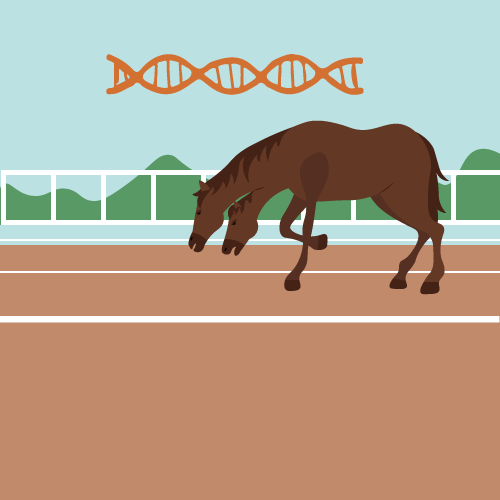People already know polo for its “frenetic pace,” but in Argentina, the sport is about to become “even quicker,” said The Times.
Scientists in the polo-obsessed nation have produced the world’s first genetically edited horses, modifying DNA from a champion mare using a technique called Crispr to increase “explosive speed” in her offspring, said the paper.
The five foals, born in October and November, have mostly the same genes as award-winning Polo Pureza and should inherit her natural agility, according to the biotech firm behind the project. But by tweaking a specific gene associated with sprinting, scientists have engineered them to one day outrun her.
A multimillion-dollar gamble
This “futuristic experiment” dates back to 2006, a decade on from the birth of Dolly the sheep (the world’s first cloned mammal), said The Washington Post.
When world-renowned polo player Adolfo Cambiaso’s “beloved stallion” Aiken Cura “limped off the field. And it became clear that the horse was in his final days”, he “decided to take a gamble” and asked a vet to save some of the horse’s skin cells. Cambiaso then had a Texas-based laboratory clone Aiken Cura, and later repeated the process with his champion mare, Dolfina Cuartetera.
But what began as “an effort to immortalise those champions” has grown into a “massive, multimillion-dollar industry”. (Argentina’s President Javier Milei himself owns four clones of his deceased dog.)
In 2016, one Argentinian player rode six horses cloned from the same mare. <span>The South American nation has “fundamentally transformed” the sport of polo, but experts have yet to fully understand the long-term possibilities and risks.
‘What nature does, but faster’
In 2013, the International Federation for Equestrian Sports lifted a ban on cloned horses competing internationally, after a review found they were unlikely to have an advantage over naturally bred horses. However, authorities ban gene editing.. Likewise, the British Horseracing Authority has banned any “gene therapy or cellular manipulation” that could give an animal an advantage, said The Times.
But Kheiron, the biotech firm responsible for the five genetically edited foals in Argentina, argues that the new horses’ genes could have theoretically occurred naturally, through selective breeding or genetic mutations. That’s what distinguishes Crispr from genetic modification, which introduces DNA from one species into another. This means the horses “comply with current Argentine regulations”, said Reuters, because they do not count as “genetic doping or genetically modified organisms“.
“There are certain muscle fibres that give it more explosiveness, a faster contraction, and the animal can have this greater explosive speed,” said Gabriel Vichera, co-founder and scientific director of Kheiron.
“We are not inventing anything artificial, but rather we are taking that natural sequence and introducing it into another natural horse, which is what nature does, but we do it faster and more targeted.”
Source: The Week
Read other news at our blog
In need of a Web Server? Take a look at our services























